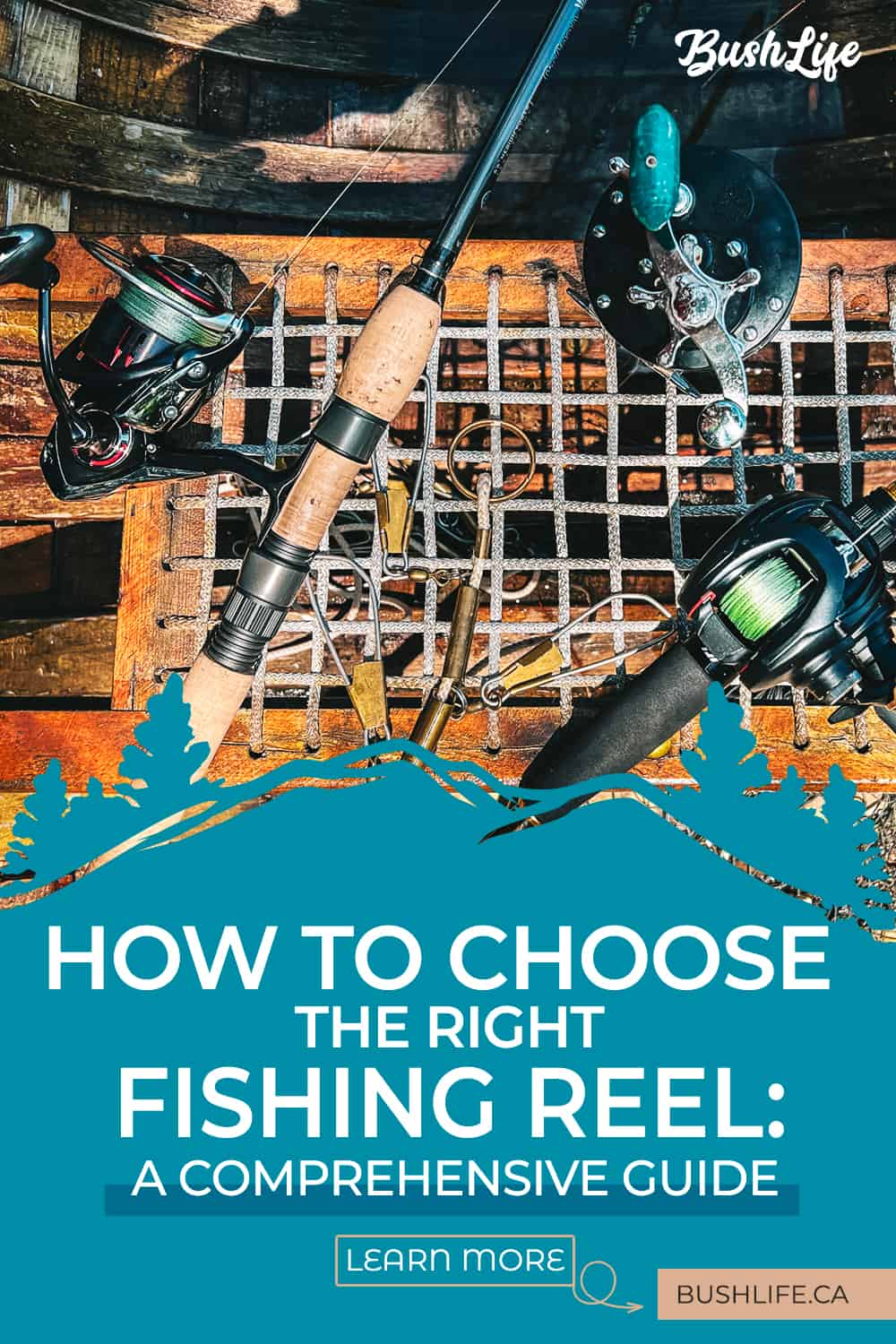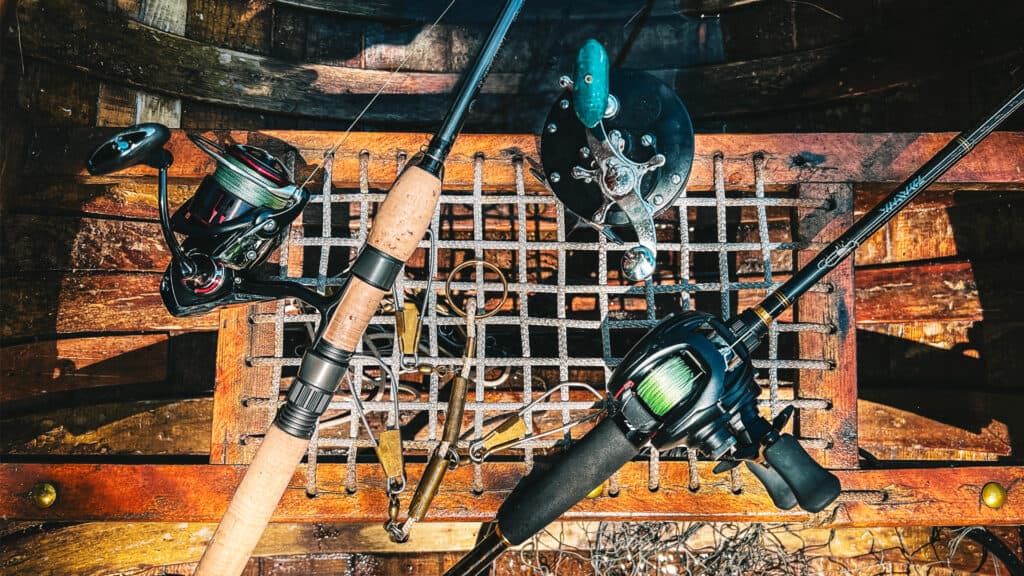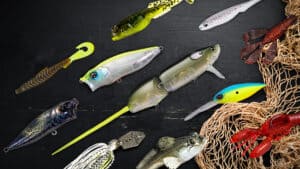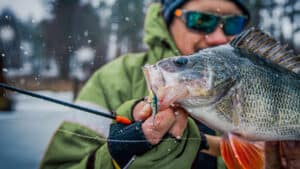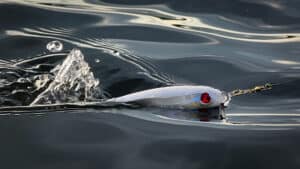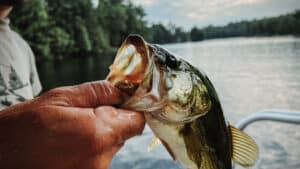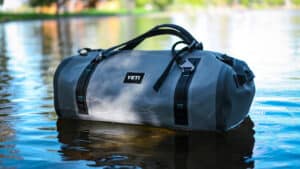Choosing the right fishing reel can seem daunting, especially for beginner anglers. There are so many different rod reel options and features to consider. Not only that, the key then becomes correlating all those reel features and specs to the type of fish you are after, what lures you will be using and what style of fishing you do. This comprehensive guide will help you make an informed decision in choosing the right fishing reel for your needs.
Discloure: Posts may contain affiliate links. Purchases made through our links result in a small commission to us at no charge to you. We only recommend products that meet our brand standards based on testing and first hand use by our authors.
Overview of Fishing Reels
Fishing reels are a fundamental tool for successful anglers. Whether for long casts, accuracy, controlled retrieves or fast retrieval such as burning – modern fishing reels intend to provide the ultimate lure control.
While we are at it, let us not forget the absolute most basic function of a fishing reel:
- Store your fishing line
- Dispense the line in a controlled manner on a cast
- Retrieve the line, hopefully with a fish:), in a controlled manner
The last thing any angler wants are problems in any of these three functions of a fishing reel. Otherwise, it is a matter of losing line, lures, fish and de-tangling frustration, which leads to spoken words not meant for sensitive ears. It is imperative to match the right reel to the job and ensure it has the quality to get the job done. Let us delve into the different types of fishing reels.
RELATED: Fishing Basics: Our Introductory Guide for the New Fisherman
What are the Different Fishing Reel Types
There are several different types of fishing reels to choose from. Each reel type has unique features and benefits, so it’s imperative to understand the differences before deciding.
Spincast Reels
These reels are simple in design, generally with a metal nose cone hiding all its vital components, a button on its back to toggle the line between free-spool and locked, and a drag adjustment mechanism to control the resistance a fish feels while pulling on the line. And when it comes to casting, there are three simple steps:
- Press the spool control button
- Swing your fishing rod, and
- Release
While it really is that easy, I can’t think of a single angler that uses one! Since these reels are out there, this post isn’t complete without addressing them. However, let’s reserve this as the fishing reel of choice for kids learning to fish for the first time.
Advantages of Spincasting Reels
Disadvantages of Spincasting Reels
Spinning Reels
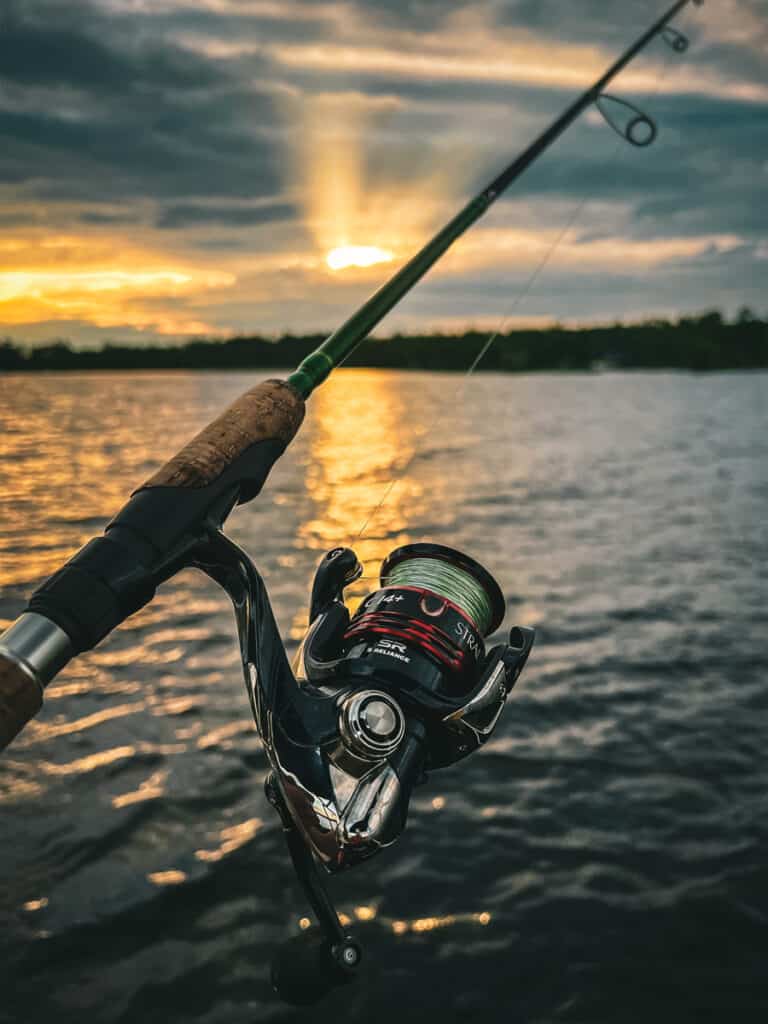
Due to its simplicity, the spinning fishing reel is the preferred choice for many anglers of all skill levels. Although it’s more complex than the spincast fishing reel, it is hands down the go-to for any adult new to fishing. It’s also the most common rod reel you will find – and many, if not most, casual anglers will never move past the spinning reel.
Design and Operation of a Spinning Reel
This open-faced reel features a metal bail which guides the line back onto the spool. Of course, it also has a drag adjustment, usually located on top of the spool. Its design is superior as it offers a natural holding position and a balanced cast when you swing your fishing rod.
A right-handed person will hold the rod in their right hand and reel in with their left.
To cast a from a spinning fishing reel, simply:
- Disengage the bail and squeeze the line against the rod with your index finger to prevent it from unspooling.
- Cast in the direction of where you want your bait to land, and release your finger halfway through the motion.
- Do not forget to re-engage the bail manually after the throw – it’s better to practice than cranking the reel, which would automatically close the bail.
When Should I Use Spinning Reel?
On BushLife, our fishing posts cover fishing for inland lakes, rivers and so forth, for species such as bass, walleye, crappie, perch, muskie and so on. And as mentioned above, most people will not go past a spinning reel. So it’s for good reason you will even find giant spinning reels for muskie fishing. While that’s perfectly fine, it’s not the right choice.
Serious anglers will use two types of fishing reels: spinning and baitcasting. The spinning fishing reel is ideal for finesse fishing, which encompasses trolling for walleye with a rubber worm, jigging for crappie, etc. Finesse fishing is about using light lures or techniques that don’t work well with a baitcasting setup.
RELATED: 11 of The Latest Spring Fishing Lures for 2024
Advantages of Spinning Reels
Disadvantages of Spinning Reels
Our Favourite and Go-To Choice: Shimano Stradic Spinning Fishing Reel
Back in the day (as recent as the early ’90s), one could buy a rod and reel combo for $100 and expect to use it for 30 years. Those days are sadly gone, and we are finding issues with budget fishing reels. Even with a warranty, it’s not worth the hassle and lost time during the season to skimp on a good fishing reel.
While far in price from top-tier professional reels, our choices are still pricey compared to budget models. But it is WHAT WE USE and comes highly recommended. This reel is a dream to fish with.
Our favourite and go-to spinning reel is the Shimano Stradic in the 2500 series. Another great alternative is the Daiwa Fuego LT Spinning Reel.
Baitcasting Reel
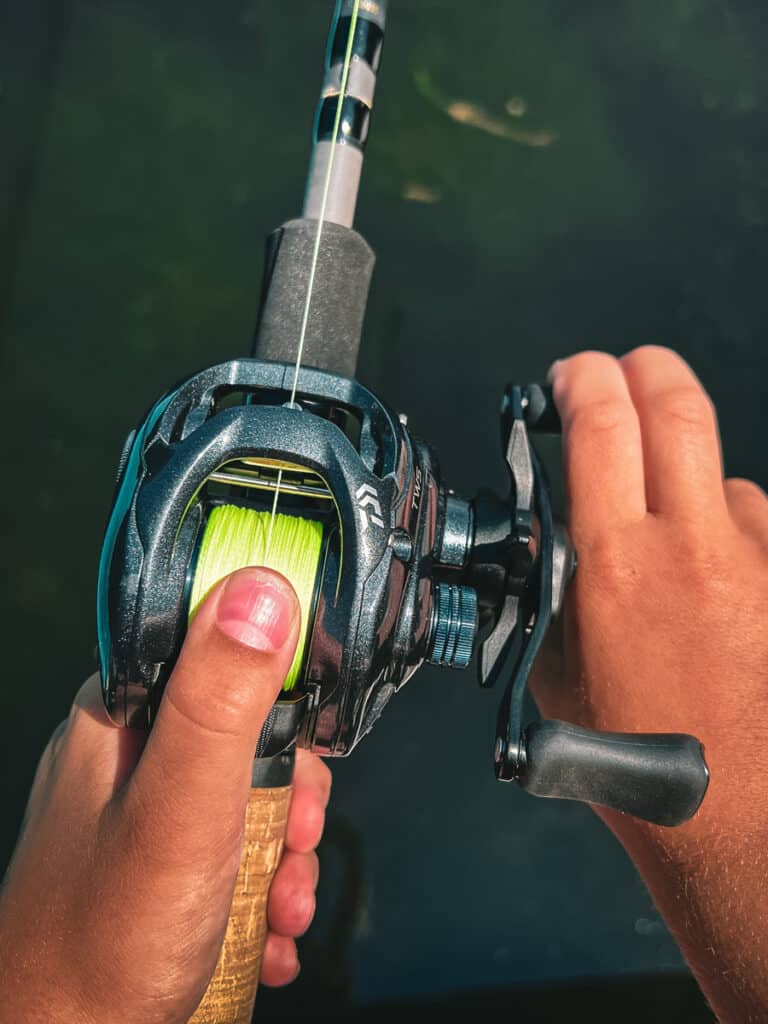
For experienced anglers and pros, or any angler who wants to take their fishing game to the next level, a baitcaster is the way to go! There is, however, a massive learning curve to these advanced fishing reels. The payoff is unmatched power, precision and control.
Unlike regular spincast and spinning fishing reels, baitcasters feature a semi-enclosed design. It allows the thumbing of the spool to stop the cast in the correct position. In addition, to drag, you’ll also find two adjustable components: the spool tension knob and a braking system. Combined, this forms the braking mechanism to prevent the spool from turning faster than the line is going out – meaning a giant tangling of the spool.
Hands down, learning to control and cast without tangling the spool into that dreaded “bird’s nest” is the biggest challenge in learning a baitcaster. But once learned, it’s like driving a bicycle.
Be aware that hands change roles with this type of fishing reel! A right-handed person will hold the rod with their left hand and reel the line with their right. For anyone learning baitcasting, this can be a challenge for those who are used to spinning setups.
RELATED: Choosing the Best Bass Fishing Lures: A Beginner’s Guide
Uses of a Baitcaster Fishing Reel
Aside from finesse fishing, which lends itself well to a spinning setup, a baitcaster is far superior for all applications. From jerkbaits, crankbaits, topwater and anything else you can think of, a baitcaster offers infinitely more control. With a baitcasting setup, you can precision throw the fishing line as far as you require, and you’ll open the doors to more options, such as higher gear ratios of 7:1 or even 8:1.
Advantages of Baitcasting Reels
Disadvantages of Baitcasting Reels
Our Favourite and Go-To Choice: Daiwa Tatula Baitcasting Fishing Reel
We have a few Tatulas in the BushLife family, and they are outstanding! They are super smooth and cast very far. Casting distance has improved because of their proprietary t-wing system, which opens the reel guide on a cast. We can’t say enough good things about this reel, and as a bonus, the price comes in lower than our recommended spinning reel.
While we use a Tatula 300 series for muskie fishing, we highly suggest the Daiwa Tatula 100 for everyday bass and walleye fishing. This size fits so well in your hand, and you’ll find no fatigue after a long day of fishing.
If unsure of gear ratio, a 7.1:1 is a happy sweet spot, giving the best of both worlds from 6:1 and 8:1. Ours here are 7 or 8, but it’s a matter of preference that newer anglers may not even notice.
The best fishing reel is the Daiwa Tatula 100. Get yours while you can, as it’s a very popular reel.
Important Fishing Reel Features to Consider
When purchasing a fishing reel, you will come across the following terminology. Let us look at what each term means:
Features to Look for in a Spinning Reel:
- Infinite anti-reverse
- Ball bearings
- Precision cut, stainless-steel gears
- Smooth, consistent drag washers
- Anti-twist line roller
- Slow oscillation speed
- Sufficient drag for species you are targeting
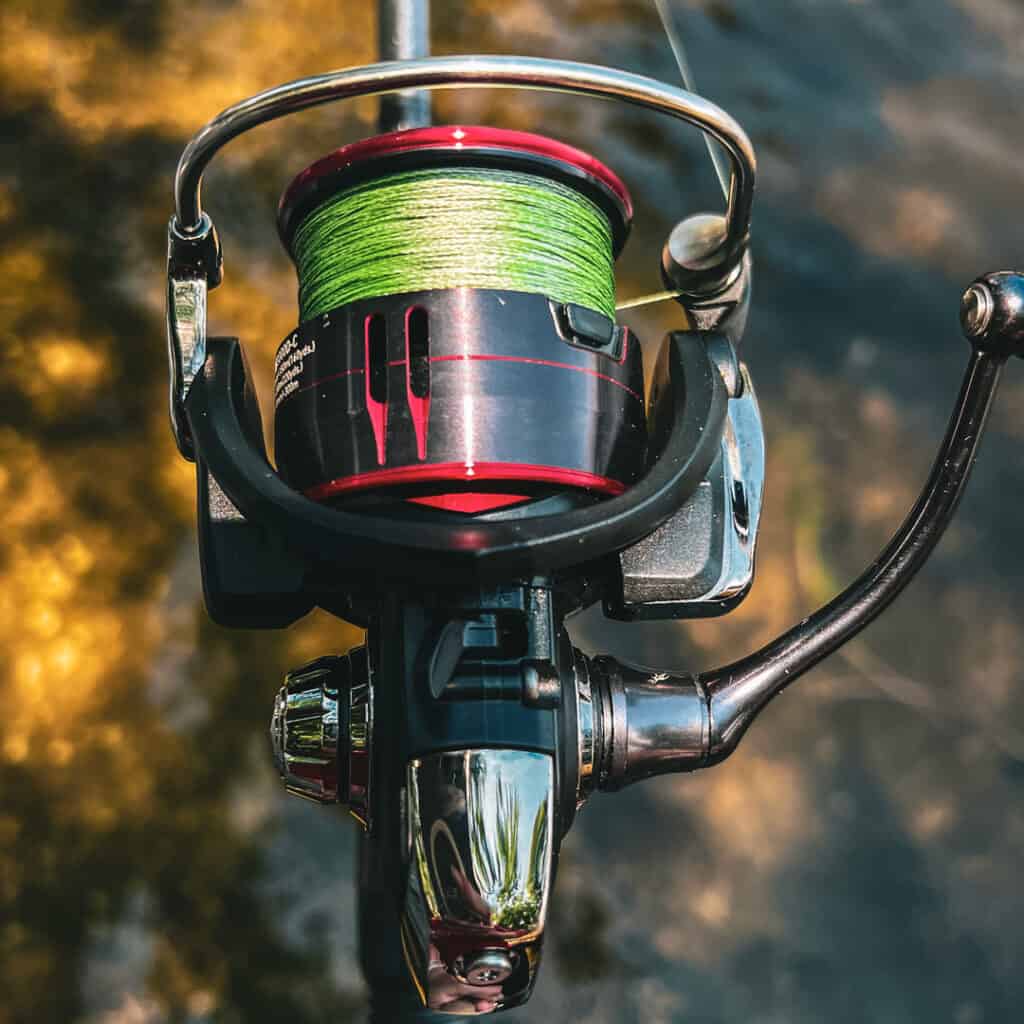
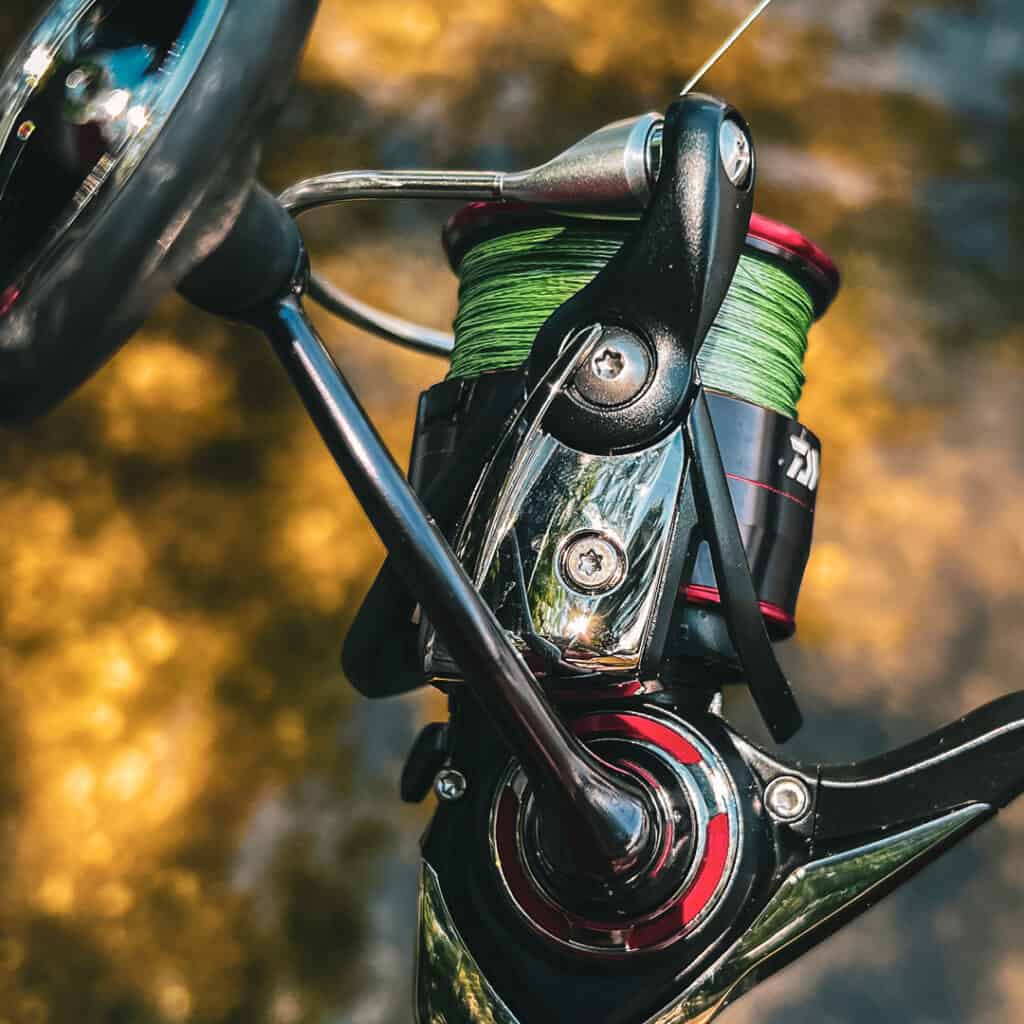
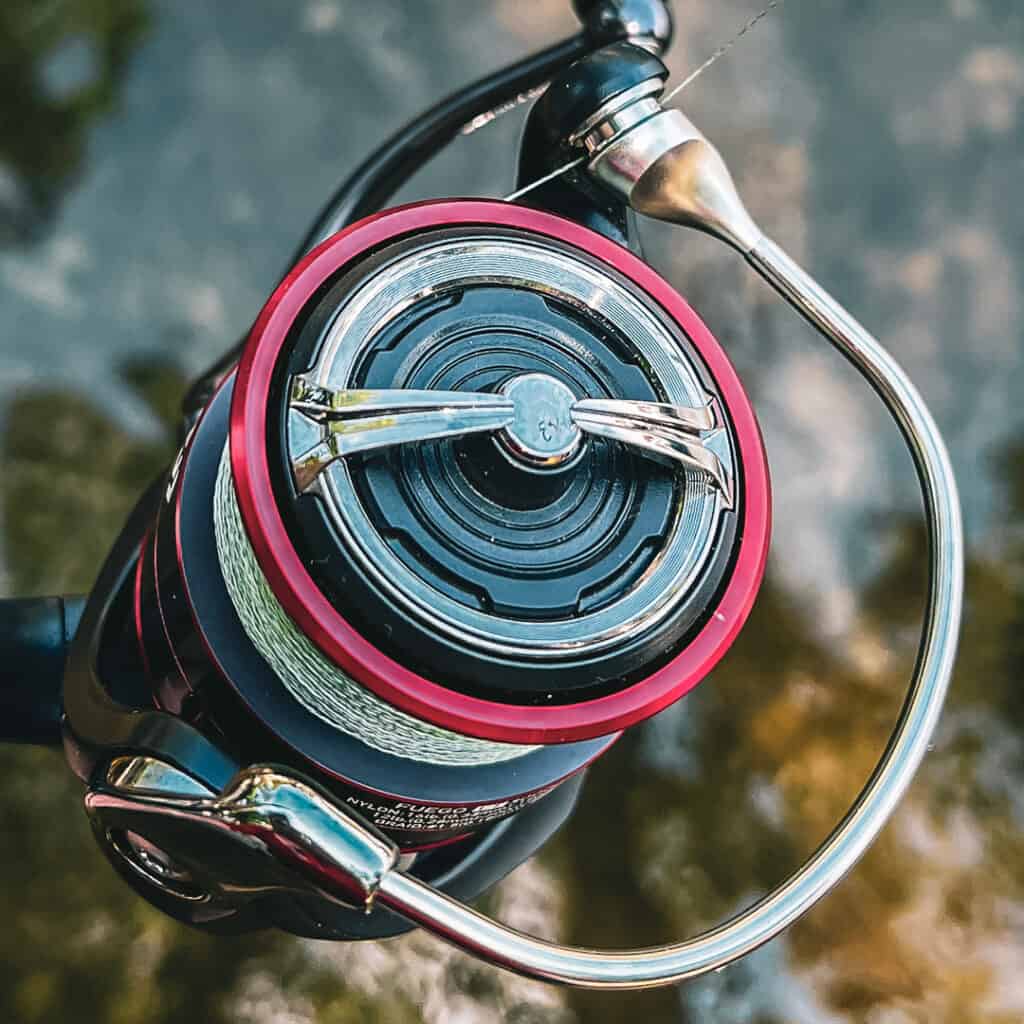
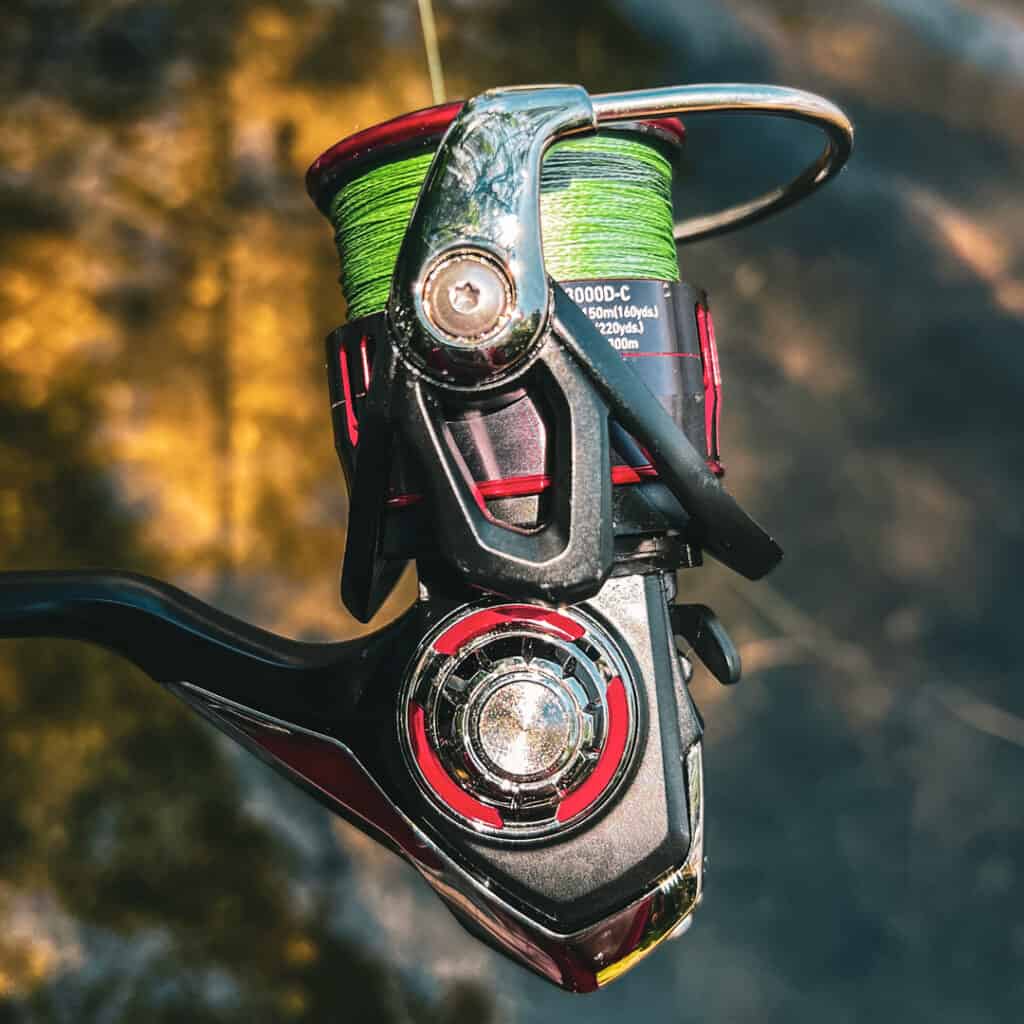
Baitcasting Reel Features to Look for:
- Infinite anti-reverse
- Ball bearings, stainless steel bearings on both sides of the spool
- Precision cut, stainless-steel gears
- Smooth, consistent drag washers
- Anti-twist line roller
- Quality reel seats
- Solid frame
- Sufficient drag
- Low gear ratio where power is needed
- High gear ratio where speed is needed
- Braking system
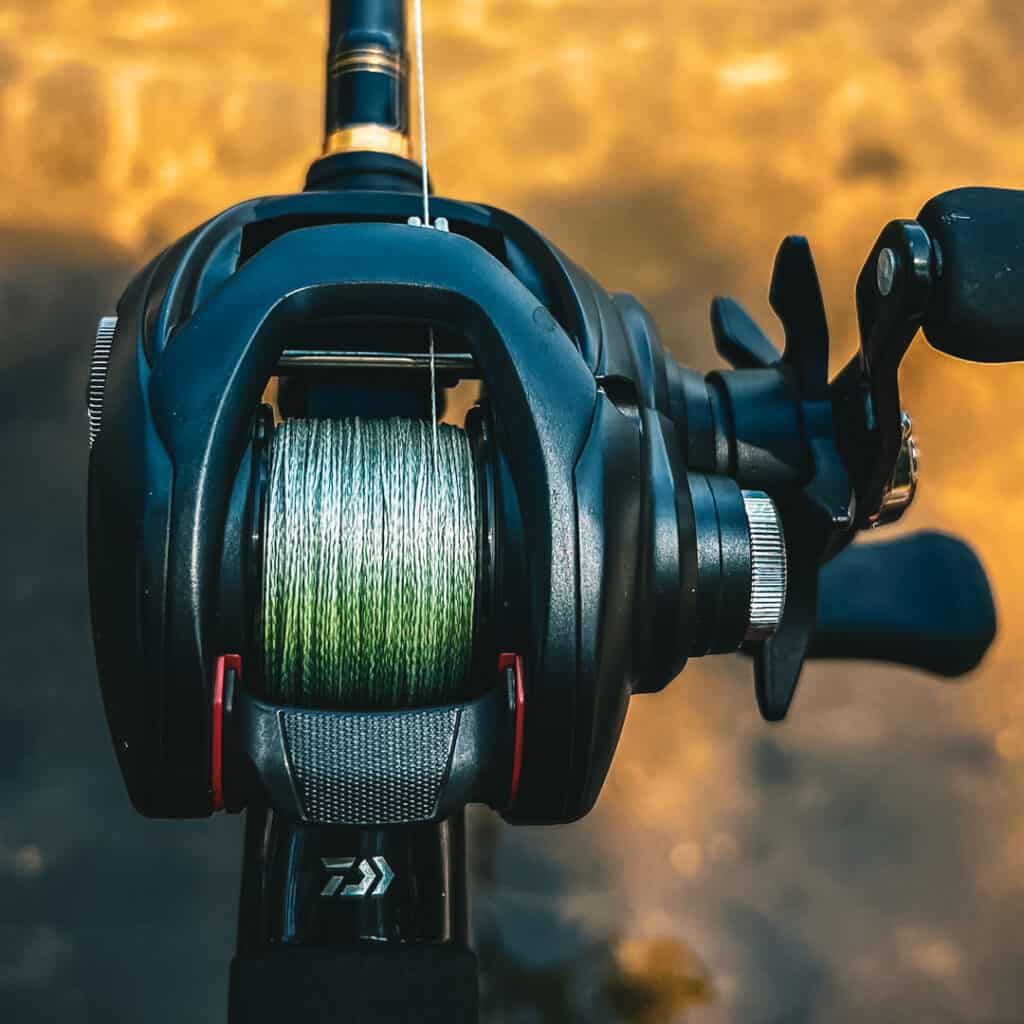
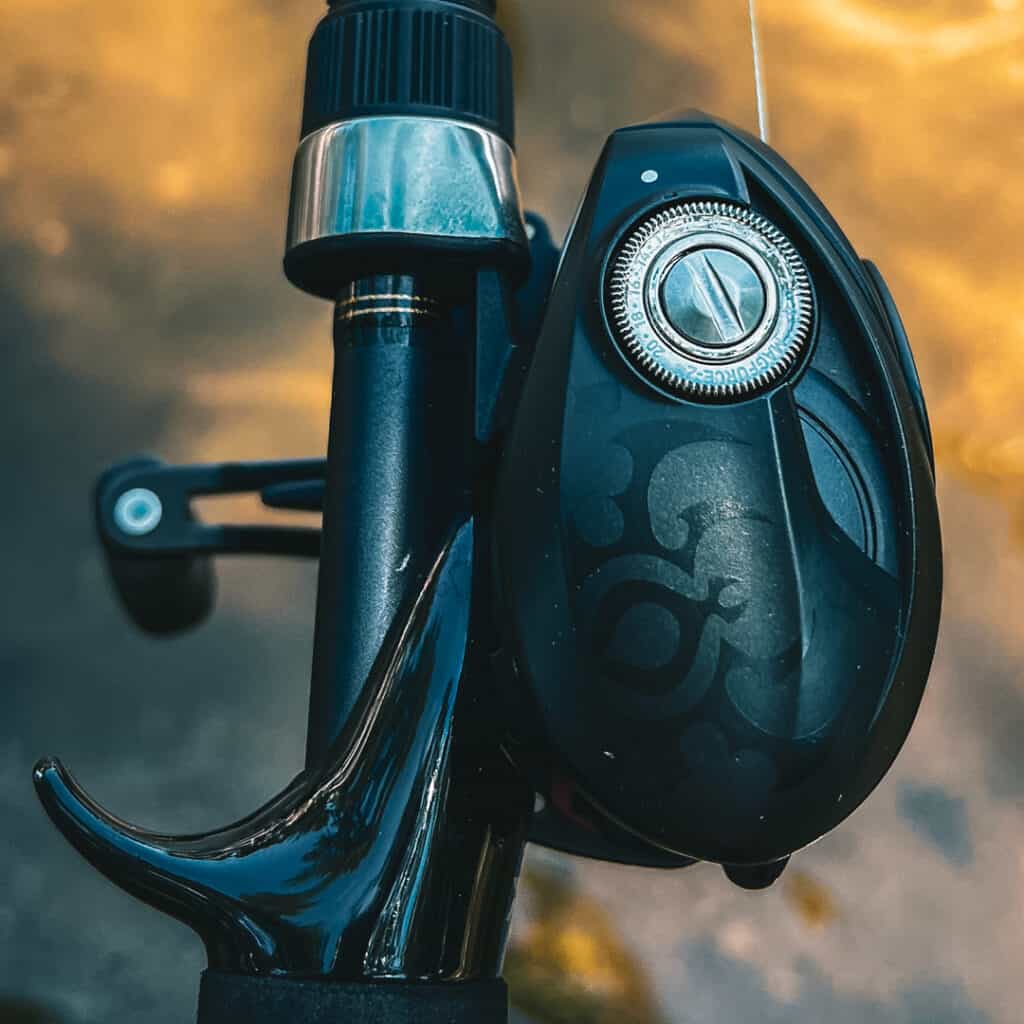
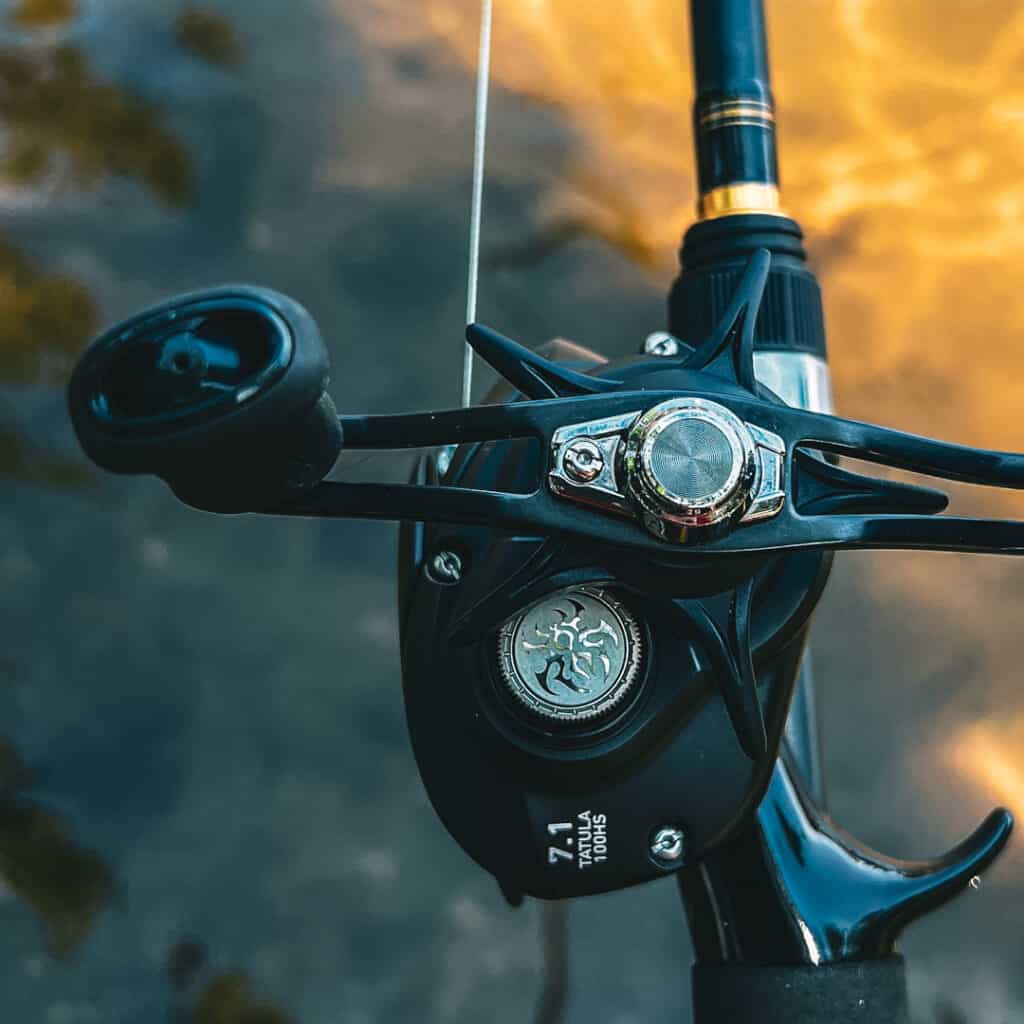
RELATED: Proven Essential Tips to Master Fall Fishing
Factors to Consider When Choosing a Fishing Reel
You now have an in-depth understanding of the different types of fishing reels and features to look for with each particular reel. However, there are a few pivotal factors to consider. These factors help determine which rod reel is perfect for your fishing needs.
1. Fishing Technique and Target Species
The fishing technique you plan to use and the target species you want to catch will play a significant role in your reel selection. Different fishing techniques require different types of reels, so ensure to match your reel to your fishing style. For example, if you plan to do a lot of freshwater fishing with light lures, a spinning reel may be your best bet. On the other hand, if you’re targeting larger fresh or saltwater species, a baitcasting reel may be more suitable.
2. Fishing Location and Conditions
Consider the fishing location and conditions you’ll be facing. If fishing in tight spaces with lots of vegetation, a spincasting reel may be easier to handle. If fishing in open waters with strong currents, a reel with a solid drag system, like a baitcasting reel, may be necessary. Ensure you choose a reel that can withstand the specific conditions you’ll be fishing in.
3. Budget
Your budget is another factor to consider when choosing a fishing reel. Reels vary significantly in price. On average, a high-quality fishing reel runs between $65 and $500, with most popular models around $250. No matter how or what you fish for, a high-quality fishing reel is essential – it affects your casting, line management, and reeling in fish. More expensive reels often come with higher-quality materials and features, but that doesn’t mean you can’t find a reliable and functional fishing reel within your budget. Do your research and read reviews to find the best fishing reels within your price range before committing to a reel.
Popular Fishing Reel Brands and Models
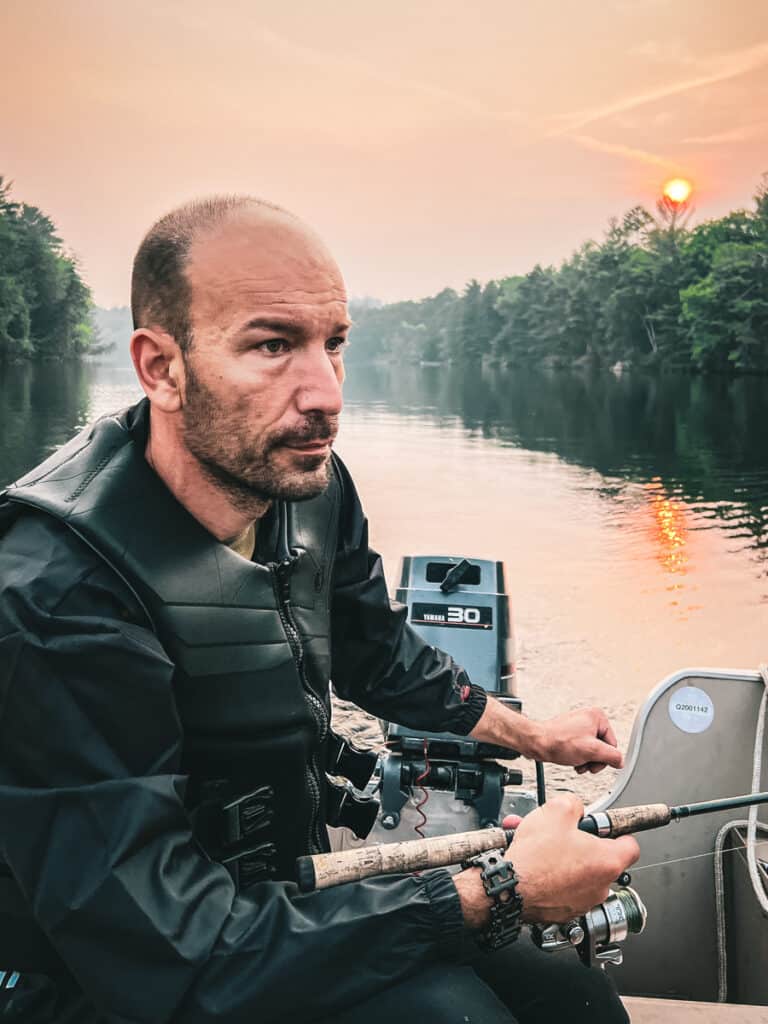
There are some generally long-running and trusted brands in fishing. When it comes to the best fishing reel brands specifically, this would include Daiwa, Shimano and Abu Garcia. These brands are what we strongly suggest as a starting point. And let’s not forget Penn, which is legendary for offshore fishing, but that’s beyond the scope of this post.
Our spinning choice by a landslide is the Shimano Stradic. It’s an industry standard, and we have years of experience with ours, as do our friends. Anything pricier is not necessary. If the budget doesn’t permit, we suggest going with a Daiwa Fuego.
When it comes to baitcasting, we have some options. Daiwa Tatula’s are outstanding! It would also be criminal not to mention Shimano’s Curado series of reels, and stepping down a bit in price would be their SLX series. We wholeheartedly suggest these as the best fishing reels without getting into tournament-level pricing. And you’ll find several tournament anglers using these very models.
RELATED: A Promising Pike Fishing Rod = More Fish in the Boat
How To Maintain a Fishing Reel
Proper maintenance of fishing reels is essential for any angler. Check out these four easy and practical steps to ensure your fishing reels operate smoothly.
When greasing and rebuilding your reel, we suggest searching for your specific model on YouTube. There’s a great chance someone has made a video on maintaining the fishing reel you own.
Fishing Reel Cleaning Tips to Remember
- Gather your tools and cleaning supplies before you start.
- Pull your fishing reel apart on a mat and mark the parts for easier reassembly.
- Try holding your fishing reel with the same hand without switching or rotating as you go.
- Use tweezers to handle small pieces.
- Before removing the spool, ensure your fishing line is secured.
- To remove impurities, use a toothbrush and a cleaner that is safe for plastic.
- Apply a light coating of grease to the bottom of the gear teeth.
- After oiling the bearings from your fishing reel, ensure they spin.
Conclusion: How To Choose the Right Fishing Reel for Your Needs
Choosing the right fishing reel can substantially enhance your angling experience. By considering factors such as your fishing technique, target species, fishing location, and budget, you can narrow your options and find a fishing reel that suits your needs.
Whether you opt for a spinning reel, baitcasting reel, or spincasting reel, each type has advantages and disadvantages. Take the time to research and test different reels to find the one that feels comfortable and suits your fishing style. Your fishing reel will serve you well for many upcoming fishing adventures with proper maintenance and care. Happy fishing!
Have you found the right fishing reel for you and your fishing style? If so, what’s your go-to fishing reel? Comment below, and don’t forget to share this post on your social media if you found it helpful.
Bookmark this post on Pinterest for future reference!
